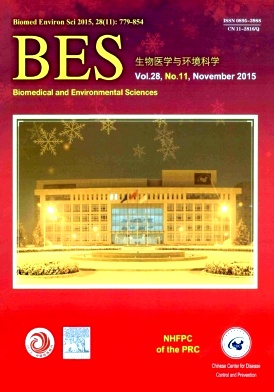Effect of NaFeEDTA-Fortified Soy Sauce on Anemia Prevalence in China:A Systematic Review and Meta-analysis of Randomized Controlled Trials
doi: 10.3967/bes2015.110
-
Key words:
- Sodium iron ethylenediaminetetraacetate /
- NaFeEDTA /
- Anemia /
- Hemoglobin /
- Iron deficiency /
- Meta-analyses /
- Food fortification
Abstract: ObjectiveTo assess the effect of sodium iron ethylenediaminetetraacetate (NaFeEDTA)-fortified soy sauce on anemia prevalence in the Chinese population.
MethodsA systematic review was performed to identify potential studies by searching the electronic databases of PubMed, Cochrane Library, WHO Library, HighWire, CNKI, and other sources. The selection criteria included randomized controlled trials that compared the efficacy of NaFeEDTA-fortified soy sauce with that of non-fortified soy sauce. Anemia rates and hemoglobin levels were the outcomes of interest. Inclusion decisions, quality assessment, and data extraction were performed by two reviewers independently. A total of 16 studies met the inclusion criteria for anemia rate analysis, of which 12 studies met the inclusion criteria for hemoglobin analysis. All included studies assessed the effect of NaFeEDTA-fortified soy sauce on anemia rates and hemoglobin concentrations.
ResultsAfter the intervention, the hemoglobin concentration increased and anemia rates decreased significantly as compared with the non-fortified soy sauce groups. For anemia rates, data from 16 studies could be pooled, and the pooled estimate odds ratio was 0.25 (95% CI 0.19-0.35). For hemoglobin concentrations, data from 12 studies could be pooled, and the pooled weighted mean difference was 8.81 g/L (95% CI 5.96-11.67).
ConclusionNaFeEDTA-fortified soy sauce has a positive effect on anemia control and prevention in the at-risk population.
| Citation: | HUO Jun Sheng, YIN Ji Yong, SUN Jing, HUANG Jian, LU Zhen Xin, REGINA Moench-Pfanner, CHEN Jun Shi, andCHEN Chun Ming. Effect of NaFeEDTA-Fortified Soy Sauce on Anemia Prevalence in China:A Systematic Review and Meta-analysis of Randomized Controlled Trials[J]. Biomedical and Environmental Sciences, 2015, 28(11): 788-798. doi: 10.3967/bes2015.110 |







 Quick Links
Quick Links
 DownLoad:
DownLoad: